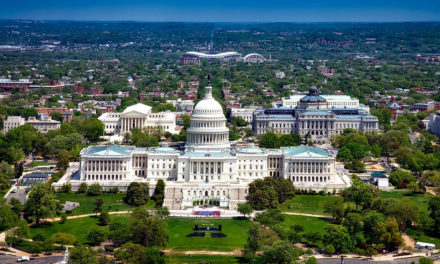AIA’s Disaster Assistance Program trains architect volunteers to provide building safety inspections in disaster areas
WASHINGTON –– Last week, The American Institute of Architects’ (AIA) Disaster Assistance Program announced it has more than a thousand architect volunteers standing by to conduct building safety inspections in areas impacted by Hurricane Florence.
“We’ve been coordinating our architect volunteers in the Carolinas, Virginia, and Maryland for potential deployment to disaster areas,” said AIA President Carl Elefante, FAIA. “These states have Good Samaritan laws in place that allow for our architects to respond to disasters more easily should they be called upon. Good Samaritan laws are critical to our volunteers being able to provide the building safety inspections that can help communities recover more quickly.”
In the days after a natural disaster, the AIA’s Safety Assessment Program (SAP) deploys its trained volunteer members to assist local officials in determining the structural integrity and livability of damaged buildings. Under the law, AIA can only deploy its architect volunteers after a state of emergency is declared in the area and if government officials call on AIA’s assistance.
The SAP is part of the AIA’s larger Disaster Assistance Program, which also produces its Disaster Assistance Handbook. The handbook—for building design professionals, emergency managers, building departments, and state and local officials—draws upon lessons architects learned during previous disasters to protect and restore the built environment in the future. Advocating for stronger building codes and Good Samaritan State Legislation are additional priorities of the program.
Complete details of the AIA Disaster Assistance Program are available online as well as updates regarding the program’s activities. A video regarding architects working in the field is available online.
Updates from AIA’s Disaster Assistance Program – Last Updated September 14, 2018
Hurricane Florence
Hurricane Florence made landfall northeast of Wilmington in Wrightsville Beach, NC as a slow-moving Category 1 hurricane. By the end of this storm, more than 40 inches of rain may have fallen with up to 13 feet of storm surge. Inland flooding may extend hundreds of miles from the coast. As a result, impacts to homes and businesses could be extensive leading to the undermining of foundations, building envelope damage, and water inundation.
Secondary hazards of power loss include the nearly half million residents who are without power and thousands displaced in shelters across the state. In Jacksonville, more than 60 people were evacuated after the roof of their hotel collapsed.
Volunteer request for Hurricane Florence
AIA Disaster Assistance volunteers in North Carolina and South Carolina are mobilizing in anticipation of building safety assessments with the NC Office of Emergency Management and SC National Guard respectively.
Deployment of out-of-state volunteers may be needed, who are Cal OES SAP credentialed and preferably within the region. Any potential deployment as part of the volunteer program will come after the hurricane passes through the area and after first responders have completed their responsibilities.
Interested in volunteering but perhaps your SAP credential is expiring? Renew online here. AIA Volunteers will be called up through the Disaster Assistance Coordinator network.
About AIA
Founded in 1857, AIA consistently works to create more valuable, healthy, secure, and sustainable buildings, neighborhoods, and communities. Through more than 200 international, state and local chapters, AIA advocates for public policies that promote economic vitality and public wellbeing.
AIA provides members with tools and resources to assist them in their careers and business as well as engaging civic and government leaders and the public to find solutions to pressing issues facing our communities, institutions, nation, and world. Members adhere to a code of ethics and conduct to ensure the highest professional standards.


